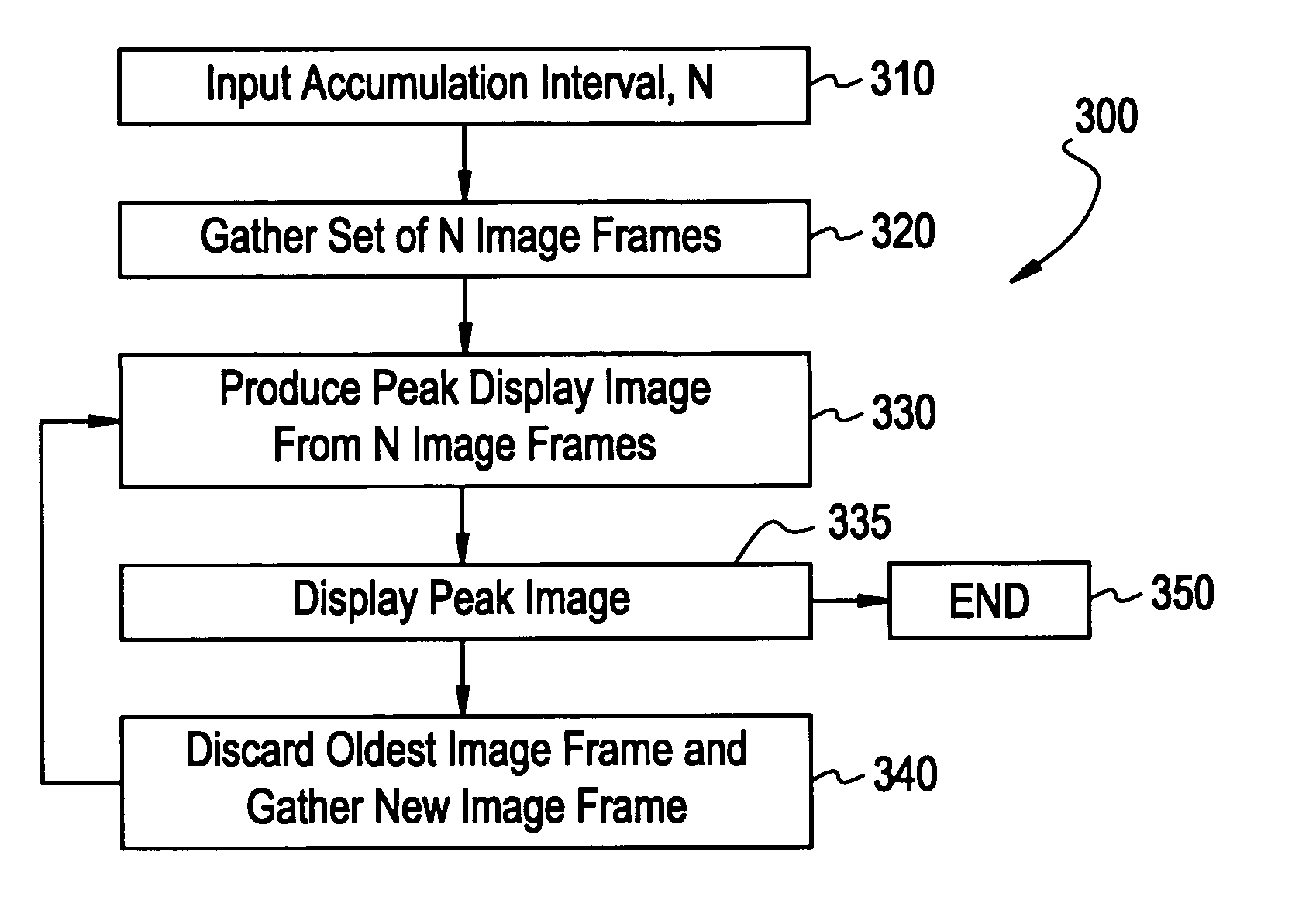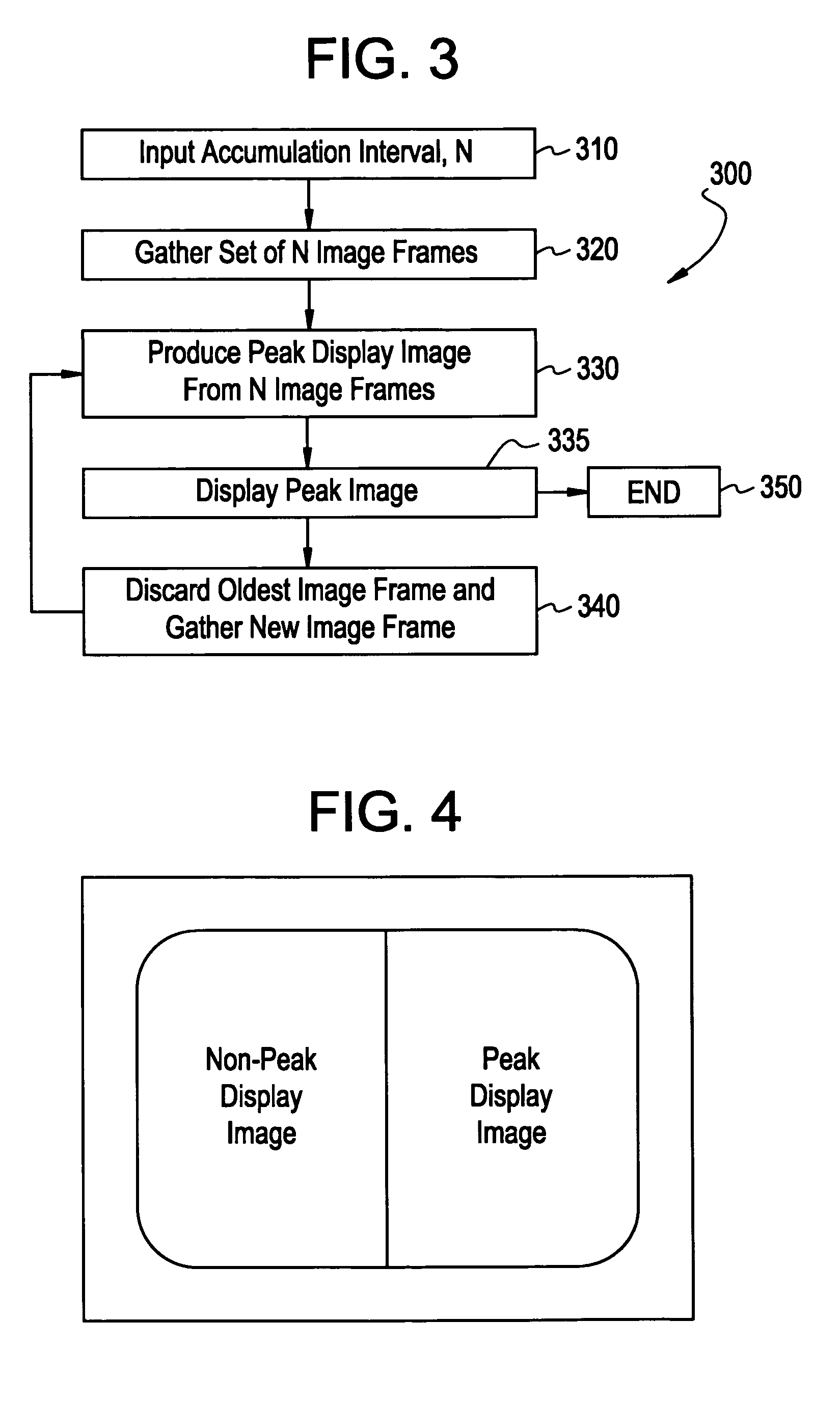Accumulation imaging
a technology of accumulation imaging and ultrasound imaging, which is applied in the field of ultrasound imaging of anatomical structures, can solve the problems of reducing the overall pixel to pixel reducing the quality of the combined image, and reducing the image quality, so as to improve the display of ultrasound imaging, enhance diagnosis, and reduce the number of image frames in the set of n image frames
- Summary
- Abstract
- Description
- Claims
- Application Information
AI Technical Summary
Benefits of technology
Problems solved by technology
Method used
Image
Examples
Embodiment Construction
[0016]FIG. 1 illustrates a system 100 for reducing the effects of tissue motion on a peak display image in accordance with an embodiment of the present invention. The system 100 includes a transducer 110, an image frame processing unit 120, a peak display image processing unit 130, and a display 140. The transducer 110 transmits data to the image frame processing unit 120. The image frame processing unit 120 processes the data into ultrasound image frames and transmits the image frames to the peak display image processing unit 130. The peak display image processing unit 130 processes the image frames into a peak display image and transmits the peak display image to the display 140. The display 140 displays the peak display image on a monitor.
[0017]FIG. 2 is a block diagram that illustrates operation of the peak display image processing unit 130 of FIG. 1 in accordance with an embodiment of the present invention. The peak display image processing unit 130 receives a predetermined nu...
PUM
 Login to View More
Login to View More Abstract
Description
Claims
Application Information
 Login to View More
Login to View More - R&D
- Intellectual Property
- Life Sciences
- Materials
- Tech Scout
- Unparalleled Data Quality
- Higher Quality Content
- 60% Fewer Hallucinations
Browse by: Latest US Patents, China's latest patents, Technical Efficacy Thesaurus, Application Domain, Technology Topic, Popular Technical Reports.
© 2025 PatSnap. All rights reserved.Legal|Privacy policy|Modern Slavery Act Transparency Statement|Sitemap|About US| Contact US: help@patsnap.com



